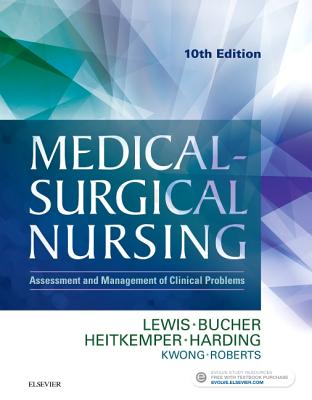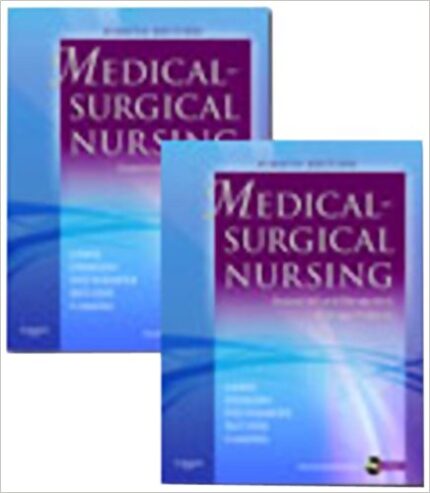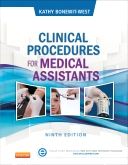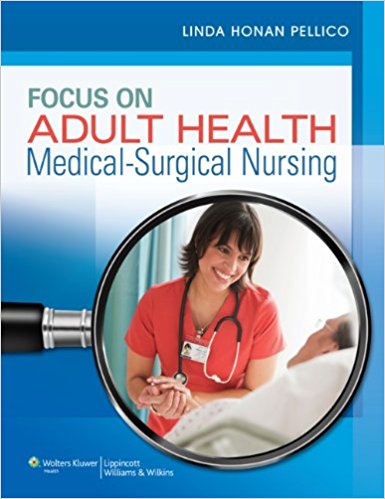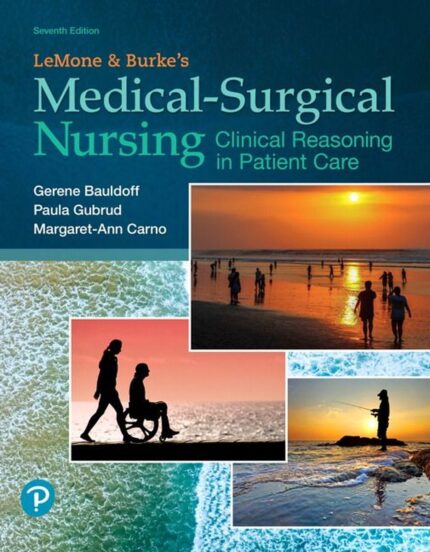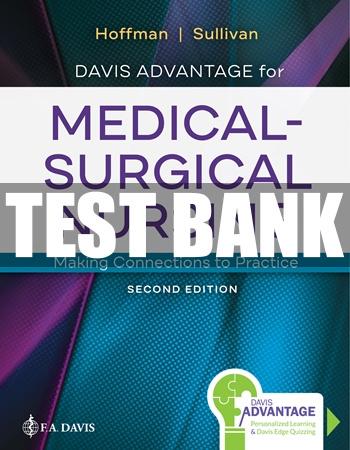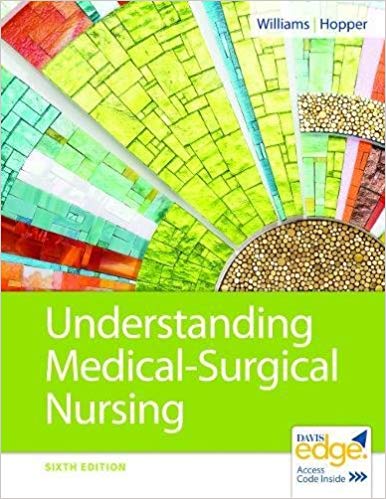Medical Surgical Nursing Assessment and Management of Clinical Problems,10th Edition by Sharon L. Lewis – Test Bank
Chapter 02: Health Disparities and Culturally Competent Care
Lewis: Medical-Surgical Nursing, 10th Edition
MULTIPLE CHOICE
1. The nurse is obtaining a health history from a new patient. Which data will be the focus of patient teaching?
|
a. |
Age and gender |
c. |
Hispanic/Latino ethnicity |
|
b. |
Saturated fat intake |
d. |
Family history of diabetes |
ANS: B
Behaviors are strongly linked to many healthcare problems. The patient’s saturated fat intake is a behavior that the patient can change. The other information will be useful as the nurse develops an individualized plan for improving the patient’s health, but will not be the focus of patient teaching.
DIF: Cognitive Level: Apply (application) REF: 18
TOP: Nursing Process: Planning MSC: NCLEX: Health Promotion and Maintenance
2. The nurse works in a clinic located in a community with many Hispanics. Which strategy, if implemented by the nurse, would decrease health care disparities for Hispanic patients?
|
a. |
Improve public transportation to the clinic. |
|
b. |
Update equipment and supplies at the clinic. |
|
c. |
Obtain low-cost medications for clinic patients. |
|
d. |
Teach clinic staff about Hispanic health beliefs. |
ANS: D
Healthcare disparities are caused by stereotyping, biases, and prejudice of health care providers. The nurse can decrease these through staff education. The other strategies may also be addressed by the nurse but will not directly impact health disparities.
DIF: Cognitive Level: Apply (application) REF: 19
TOP: Nursing Process: Planning MSC: NCLEX: Health Promotion and Maintenance
3. What information should the nurse collect when assessing the health status of a community?
|
a. |
Air pollution levels |
c. |
Most common causes of death |
|
b. |
Number of health food stores |
d. |
The education level of the individuals |
ANS: C
Health status measures of a community include birth and death rates, life expectancy, access to care, and morbidity and mortality rates related to disease and injury. Although air pollution, access to healthy food stores, and education level are factors that affect a community’s health status, they are not health measures.
DIF: Cognitive Level: Understand (comprehension) REF: 18
TOP: Nursing Process: Assessment MSC: NCLEX: Health Promotion and Maintenance
4. The nurse is caring for a Native American patient who has traditional beliefs about health and illness. Which action by the nurse is most appropriate?
|
a. |
Avoid asking questions unless the patient initiates the conversation. |
|
b. |
Ask the patient whether it is important that cultural healers are contacted. |
|
c. |
Explain the usual hospital routines for meal times, care, and family visits. |
|
d. |
Obtain further information about the patient’s cultural beliefs from a family member. |
ANS: B
Because the patient has traditional healthcare beliefs, it is appropriate for the nurse to ask whether the patient would like a visit by a shaman or other cultural healer. There is no cultural reason for the nurse to avoid asking the patient questions because these questions are necessary to obtain health information. The patient (rather than the family) should be consulted about personal cultural beliefs. The hospital routines for meals, care, and visits should be adapted to the patient’s preferences rather than expecting the patient to adapt to the hospital schedule.
DIF: Cognitive Level: Apply (application) REF: 24
TOP: Nursing Process: Implementation MSC: NCLEX: Psychosocial Integrity

